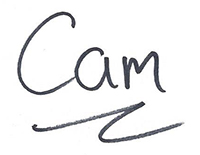(a) Get your mind out of the gutter! 😉
(b) If you would like to enjoy your reading more, read on.
There is a tool out there that is currently enjoying a revival in many businesses and industries. It is the simple checklist.
Dr. Atul Gawande wrote the book, The Checklist Manifesto, after he incorporated checklists into his surgery routine and thereby saved lives and costly mistakes. He observes that commercial airline pilots have been using checklists almost from the beginning of aviation.
Checklists are stupidly simple lists of things to do in routine situations, where missing a step could be inconvenient, or even critical. They’re not quite the same thing as task lists, which are lists of one-off things to remember to complete. Checklists capture processes and systems and simplify them, so you can repeat them over and over.
Is there a process, system or complicated procedure that you would like to make error- and frustration-free?
For example, consider Thanksgiving.
Wouldn’t it be great if you had a list of things to do as you prepare the meal, so you could just check off items as they’re completed (or delegated and completed), so you don’t have to stand in the middle of your kitchen, muttering to yourself as you touch each finger in turn; “Turkey in, potatoes peeled…Oh! Get the spare chairs from the garage!”?
The easiest way to build a checklist is to write down everything you remember about a process, then sort and arrange everything in the order it should be done. Some things (like clearing off the dining room table) have to be done before others (light the candles).
Each time you use the checklist, you’ll find there’s items you can add, rearrange or delete, until the checklist is foolproof.
Tip: If you’re an Evernote or OneNote user, your notebook is the perfect place to keep checklists. In OneNote, you can store them as page templates, then create a new page with that template each time you want a fresh checklist.
So how can checklists help with reading?
Here’s a few ideas:
- Capture the process you have for buying, storing and indexing your new book purchases. Do you use Calibre to manage books, for example? There’s probably several steps involved that you would like to make sure you do each time (for example, adding a note in the note section about where the book lives — in your Kindle app, or Nook App or print edition on the keeper shelf.) Once you build the checklist, you might find that after a while, you don’t need it anymore, because you don’t forget any steps.
- A checklist for how to sideload books you buy/acquire from sources outside your reading app’s primary store. Once you have the process nailed down for your devices, you can use the checklist to make the process pain-free, until you’re a master at it.
- A checklist for writing and uploading reviews. There are many steps involved, including elements of the review itself, that you need to remember to include or make decisions about.
- A checklist of titles and authors to look for when you’re combing through brick and mortar bookstores, or browsing on-line.
If there is a process you go through that is constantly going awry because of overlooked steps, it’s a good candidate for a checklist.
A basic checklist for writing reader reviews.
- As soon as you finish the book, decide on a star rating (which can be revised later)
- Scribble down your gut reaction to the book.
- If you loved (or hated) the book or parts of the book, ask yourself “why?” and right that down.
- Favorite character, and why?
- Favorite moment in the story, and why?
- What made you want to pick up the story and read it? Did that promise come through in the story? Did you get what you expected? Or was it even better than you expected? Why?
- If the book is a part of a series, did you come into the series half-way through, and did this leave you floundering? Would it be a good idea to mention in the review that earlier books should be read first? Or can the book be read as a stand-alone?
- Avoid spoilers! Don’t tell anyone who hasn’t read the book any of the major turning points or surprises in the story.
- If you simply must outline a story point to explain yourself, then put <spoiler alert> and <spoiler ends> around the giveaway, so readers can skip over it if they want to.
- If you have a negative opinion about the story, try hard to phrase your criticism about the story, rather than the author. For example: “This story had several major weaknesses,” as opposed to “This author can’t write for peanuts!”.
- If you know what would have made the story a better read for you, you might want to add that into the review as well.
- Let your notes or your review draft sit for a while and cool off. Then come back and read it carefully. Here is where you can clean up your grammar and spelling, and rephrase anything that doesn’t sound right.
- If you want to squeal about a book, go right ahead and squeal — rave reviews are great and they sound a lot more authentic than something written with perfect English and formatting. Be true to yourself! 😊
- You can also review your star rating at this point, and analyze if you think it is an accurate reflection of how much you liked the book.
- Once that is all done, upload your review!
__________
Life is too busy to remember every little detail of an increasingly complex and technical life. Checklists save your memory…and cover your butt when you must get things right.
Give them a try!

